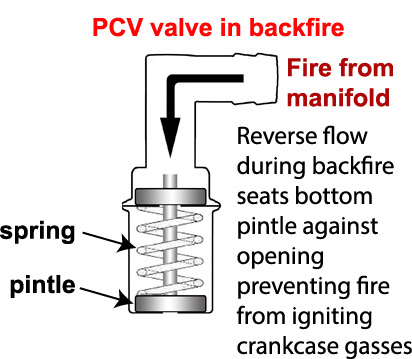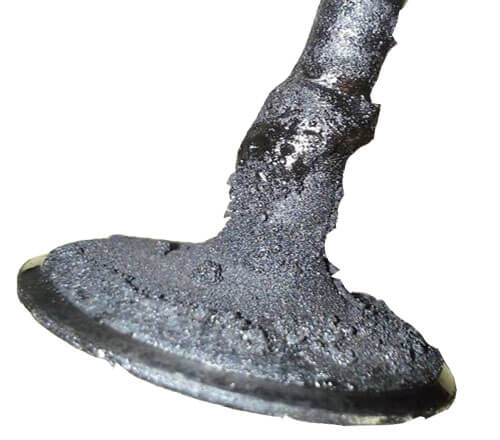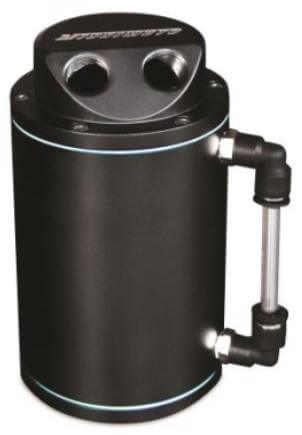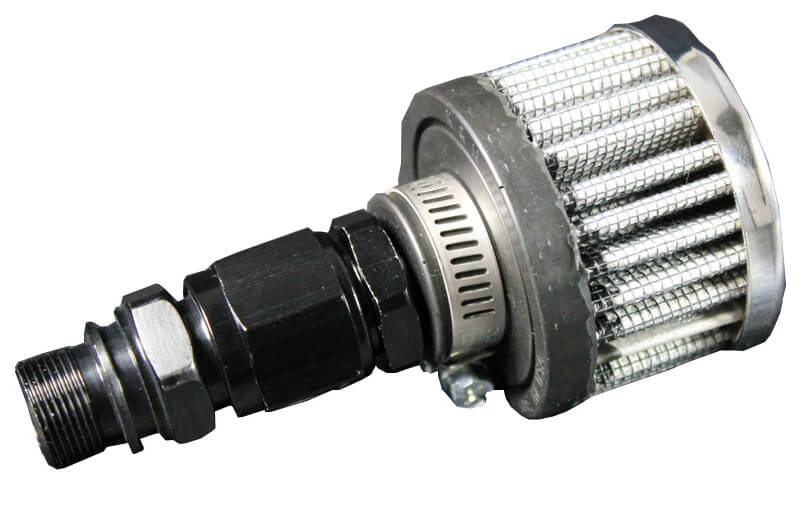PCV delete
PCV delete — pros and cons
What is a PCV system?
PCV stands for positive crankcase ventilation. The system

The PCV valve closes to prevent a backfire from igniting crankcase vapors and damaging your engine
consists of a PCV valve and tubing. The PCV valve has a metered orifice and a one-way check valve. It’s usually mounted in a valve cover. The hose then runs to the intake. It’s designed to use intake manifold vacuum to suck crankcase blow-by gasses out of the crankcase and burn them in the engine.
The one-way check valve is designed to prevent a crankcase explosion in the event of a backfire in the intake manifold.
What is blow-by and how did it get there?
Pistons have three rings and each ring has a gap. During compression and combustion, some air/fuel/exhaust gasses seep through the ring gaps into the crankcase. Blow-by also contains some oil. All engines have blow-by; older engines with worn piston rings have more blow-by.
The blow-by must be vented or sucked out of the crankcase for several reasons. First, if it isn’t removed, it’ll pressurize the crankcase and blow out the oil pan and valve cover gaskets. Second, the gasses contain fuel and water which can mix with the oil to cause sludge. Third, since there’s raw gas in the blow-by, any backfire could immediately ignite the gas and cause an explosion in the crankcase—never a good thing.
In the early days of engine production, before pollution laws, these crankcase gasses were simply vented to the atmosphere, contributing to air pollution and smog.
What are the downsides to a PCV system?
As mentioned above, blow-by contains fuel and exhaust. But it can also contain oil vapor. Oil gets into the PCV stream two ways: 1) Fuel can wash oil off the cylinder walls. During combustion, some of that oil is forced past the piston ring gaps and into the crankcase. 2) Since the PCV valve sits in the valve cover, oil vapor and oil splash inside the valve cover can get sucked into the PCV stream. When the PCV stream is rerouted into the intake, some of that oil can deposit onto the intake valves, causing carbon buildup
PCV can contribute to carbon buildup on intake valves
In a direct injection engine where the fuel is injected

Carbon buildup on valve
into the cylinder; the oil that gets washed off the cylinder wall is re-routed back into the intake where it can deposit onto the backside of the intake valves, forming hard carbon deposits. That carbon formation didn’t happen on port injected engines because the fuel injectors constantly spray fuel onto the backside of the intake valves to clean them.
PCV can cause increased oil usage
The air/fuel mixture in a port injected engine washed some of the oil off the cylinder walls. But the oil wash issue is much more severe in a direct injection engine. So more oil is washed off the cylinder wall and more of that oil winds up in the PCV stream where it’s burned.
What can be done about increased oil wash and carbon deposits
Carmakers have worked hard to design baffles and oil separators into their valve covers to drop oil out of suspension from the blow-by gasses. Plus, they are redesigning the piston crowns and direct injection patterns to reduce oil wash from occurring in the first place.
But many tuners and modders have taken matters into their own hands and installed oil catch cans. These devices install between the engine and intake to separate out the oil vapor and collect it in a drain able can.
Oil catch cans are oil separators
Aside from being slightly overkill, there are no downsides  to installing a catch can. However, tuners and modder kid themselves that they’re really catching all that much oil. Most of what they’re draining from the catch cans is really fuel and water.
to installing a catch can. However, tuners and modder kid themselves that they’re really catching all that much oil. Most of what they’re draining from the catch cans is really fuel and water.
There’s there’s PCV delete
The theory here is that if you delete the PCV valve and install a PCV delete kit, you completely eliminate the issue of burning oil in the combustion chamber and the issue of carbon buildup on the intake valves. Some even think that the PCV flow degrades performance. This is total bullshit since the ECM knows a certain portion of the air/fuel charge will be blow-by and calculates the air/fuel ratio with this in mind.
Modifying your engine’s PCV system with a  delete kit is illegal. Period. There’s no way around that fact. Second, a PCV delete will not stop carbon buildup on your intake valves.
delete kit is illegal. Period. There’s no way around that fact. Second, a PCV delete will not stop carbon buildup on your intake valves.
A PCV delete kit is nothing more than a vent to the atmosphere. In other words you’re converting your engine back into a polluting vehicle by venting blow-by into the outside air.
A PCV delete will vent noxious gasses into the engine compartment which will be sucked into your fresh air intake if you don’t close the recirculate on your HVAC. In other words, you’ll have to drive with your HVAC on recirculate all the time or smell exhaust and fuel gasses in the cabin.
If the PCV delete kit comes with a filter, you have to constantly change the filter. Remember, a PCV delete doesn’t stop blow-by, it just vents it to the atmosphere.
Will a PCV delete improve performance?
No. Remember, the ECM is expecting blow-by and calculates the air/fuel mixture with blow-by included. Installing the delete kit will have a detrimental effect on your idle performance. To compensate you’ll have to perform a software update.
Will a delete kit eliminate carbon deposits on the intake valves?
No. Since the kit doesn’t eliminate blow-by, whatever blow-by gasses remaining in the engine after shut down will rise to the top of the engine and deposit on the intake valves.
The kit is a complete waste of money and is illegal.
©, 2021 Rick Muscoplat
Posted on by Rick Muscoplat
